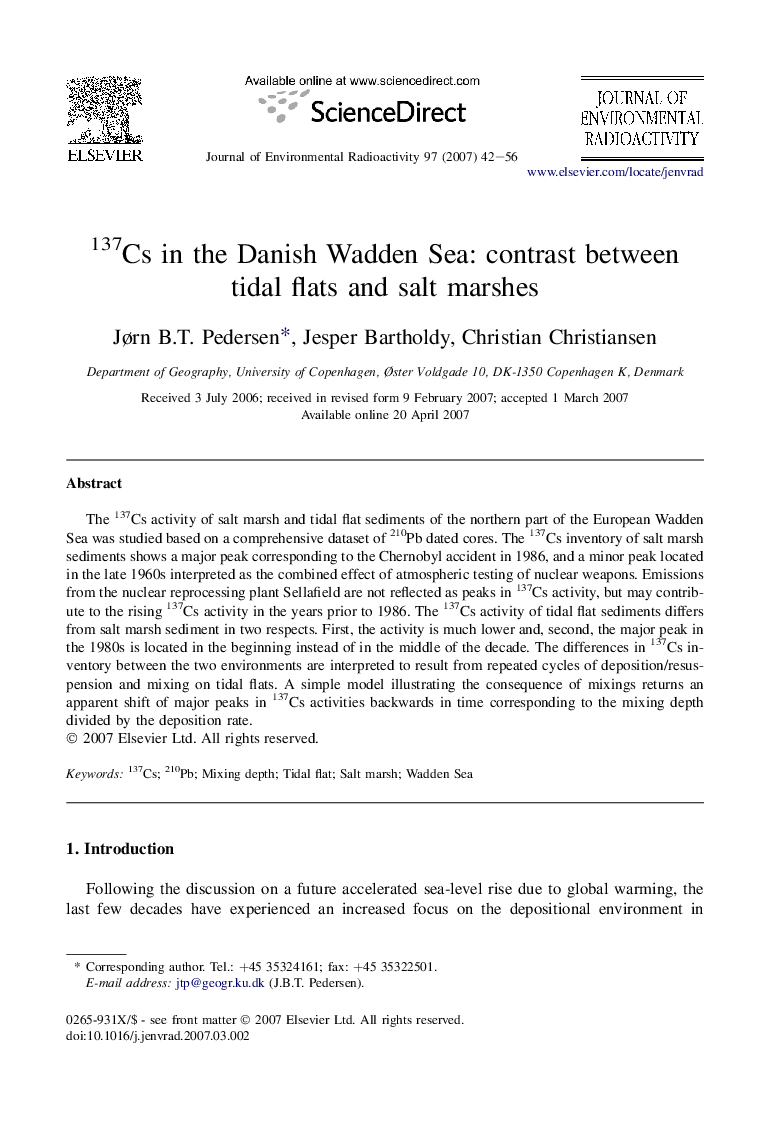| Article ID | Journal | Published Year | Pages | File Type |
|---|---|---|---|---|
| 1739443 | Journal of Environmental Radioactivity | 2007 | 15 Pages |
Abstract
The 137Cs activity of salt marsh and tidal flat sediments of the northern part of the European Wadden Sea was studied based on a comprehensive dataset of 210Pb dated cores. The 137Cs inventory of salt marsh sediments shows a major peak corresponding to the Chernobyl accident in 1986, and a minor peak located in the late 1960s interpreted as the combined effect of atmospheric testing of nuclear weapons. Emissions from the nuclear reprocessing plant Sellafield are not reflected as peaks in 137Cs activity, but may contribute to the rising 137Cs activity in the years prior to 1986. The 137Cs activity of tidal flat sediments differs from salt marsh sediment in two respects. First, the activity is much lower and, second, the major peak in the 1980s is located in the beginning instead of in the middle of the decade. The differences in 137Cs inventory between the two environments are interpreted to result from repeated cycles of deposition/resuspension and mixing on tidal flats. A simple model illustrating the consequence of mixings returns an apparent shift of major peaks in 137Cs activities backwards in time corresponding to the mixing depth divided by the deposition rate.
Related Topics
Physical Sciences and Engineering
Energy
Nuclear Energy and Engineering
Authors
Jørn B.T. Pedersen, Jesper Bartholdy, Christian Christiansen,
